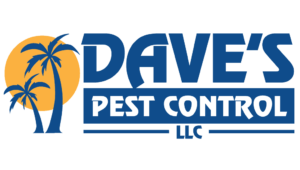In the pest control business, it is our duty to prevent pests from entering and inhabiting the homes of our customers. The best way to achieve our objective is to perform proper and comprehensive pest inspections. It is important to thoroughly inspect the interior, perimeter, and the boundary of each customer’s home and communicate that information to both the customer and the route technician. It all starts with the initial inspecting technician and is continued by the service technician.
Inspectors are the liaison between the customer and the technician prior to the initial service. It is essential for the inspector to conduct an interview to establish the customer’s concerns as far as existing or potential pests and the expectations they have for our service. In order to protect the brand of Dave’s Pest Control, it is important for the inspector to inform the customer that we are in the business of pest control not pest elimination. They, the customers, will play a key role in this 50-50 relationship. Their part is to ensure that their home is not an inviting environment for pests. It is the technician’s duty to target specific pests in a responsible and effective manner. If either party does not uphold their end of the bargain, the program fails and the company brand suffers.
Upon the initial interior inspection, the focus should be on the kitchen, bathrooms, and laundry room. These areas offer food, water, and harborage; essentials for pests to thrive. The condition of the home should be noted. Poor sanitation and overabundance of clutter can offer an ideal habitat for roaches and rodents. The cabinetry, baseboards, and any molding as well as under sinks and appliances should be thoroughly inspected for signs of infestation. Any possible points of entry such as openings for pluming and/or cracks, crevices, and holes in walls or trim should be noted. Pictures are a great way of documenting all issues, existing or potential, and aid in communication to not only the customer but to the service technician. While the technician is providing each service and treating these areas, they should be inspecting and documenting as well. In addition to noting what pesticides are used each visit, the service tech should be noting whether conditions within the home are improving and if not what needs to be done. These service reports are kept on file as a reference for each and every account.
Next the perimeter should be inspected. These areas include garages, exterior walls, soffits/gutters, windows/doors, porches/outdoor cooking areas, pool/A/C areas, soil/foundation interface, landscape beds and attics/crawl spaces (when necessary). Points of entry are the focus. Any water damage to roof/soffits, possible termite damage, mud tubes and any other WDOs (wood destroying organisms) should be noted. Any signs of wasp/bee nests, ant trails, other crawling insects, and rodents should be documented as well. Photo documentation can be a great aid in the communication process between all parties involved in the pest prevention program. Again, the technician should be inspecting all these areas when treating the exterior of the home. Any conditions conducive to pest infiltration should be documented.
The boundary of the home extends from the perimeter zone to the property line or approximately 50 ft. out from the building. The boundary which includes sheds, carports, children’s play houses/areas, garbage cans/dumpsters, wood piles, and the lawn can be quickly scanned for potential signs of pest activity or sources of food and water. Leaking A/C units, soiled garbage canisters, bird seed/feeders and food/beverages left out by children can attract pests of all varieties. Fences and piles of wood can harbor ants and termites that can potentially make their way into the home. Any areas of concern should be noted. Now that all three zones have been inspected and the findings documented, the inspector can convey the information to the customer and inform them of the pest management plan that will be customized to fit their needs based off the findings during the inspection.
Without first giving a thorough inspection of the entire property it would be difficult to come up with a plan to provide service. Documentation of the inspection findings provides both the customer and the pest control technician with the information needed to combat a specific pest and to ensure that re infestation is unlikely. Continued inspections and documentation by the technician is important to ensure the program is being followed and that Dave’s Pest Control’s reputation for quality and honest work is protected.
